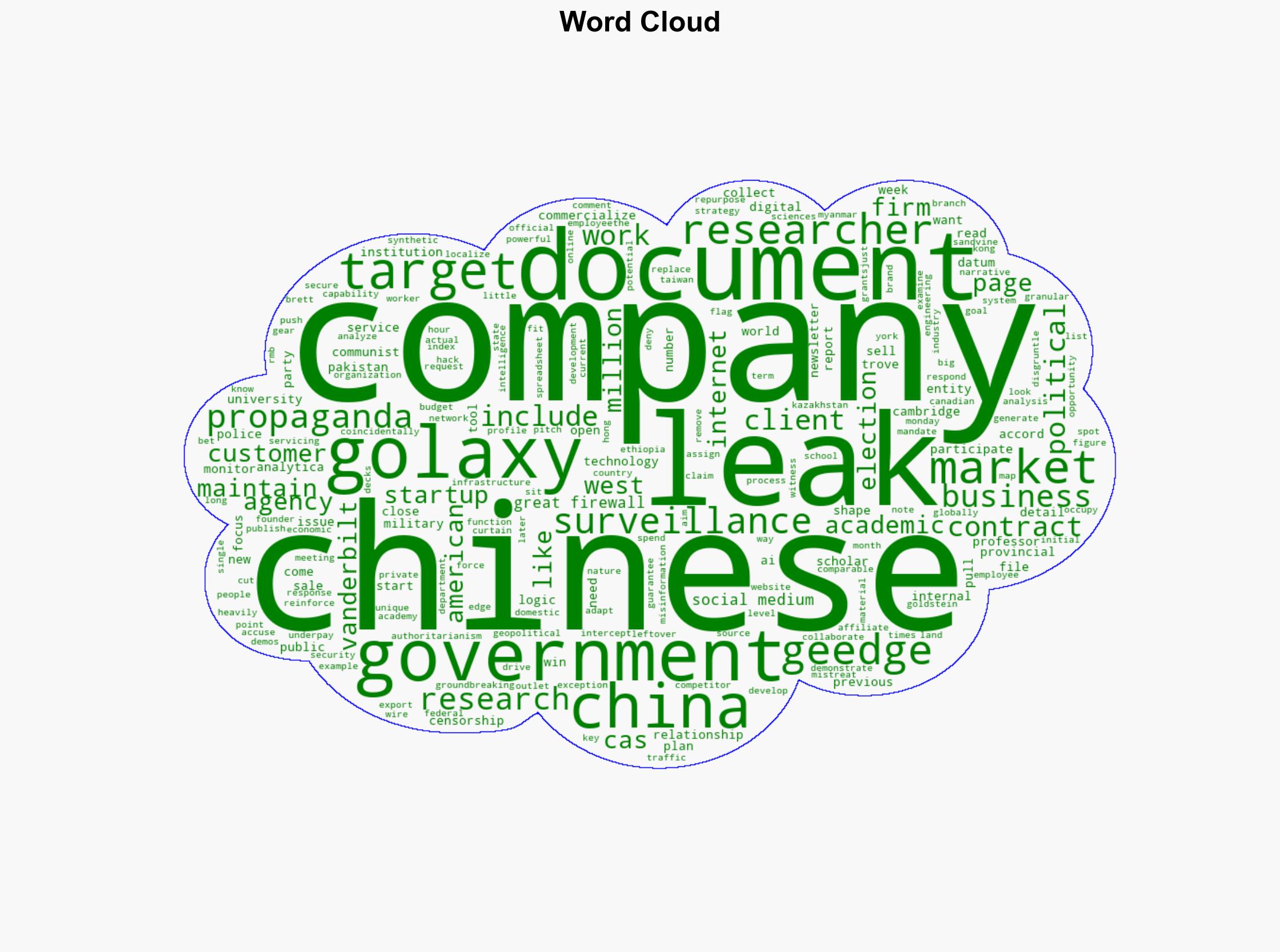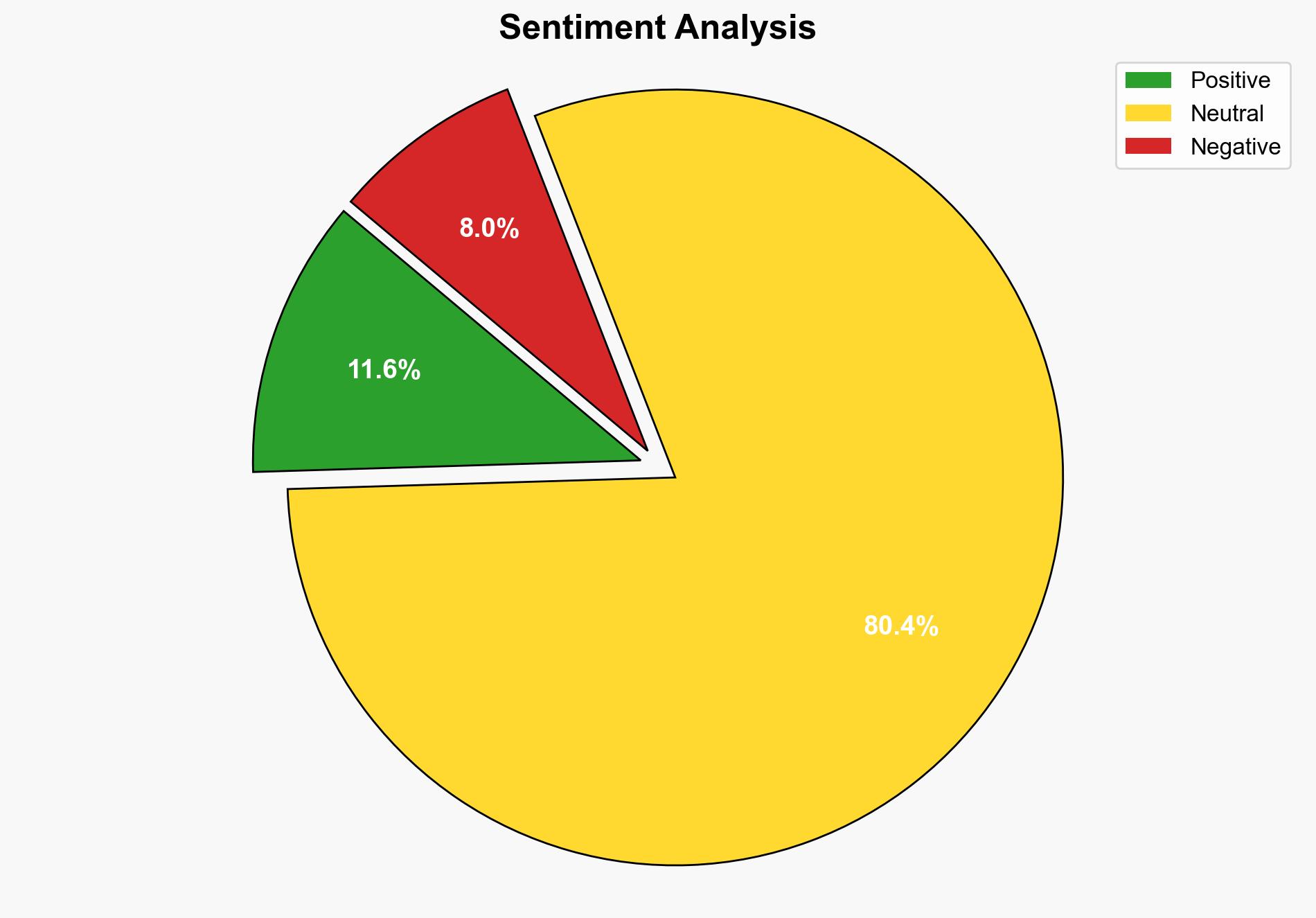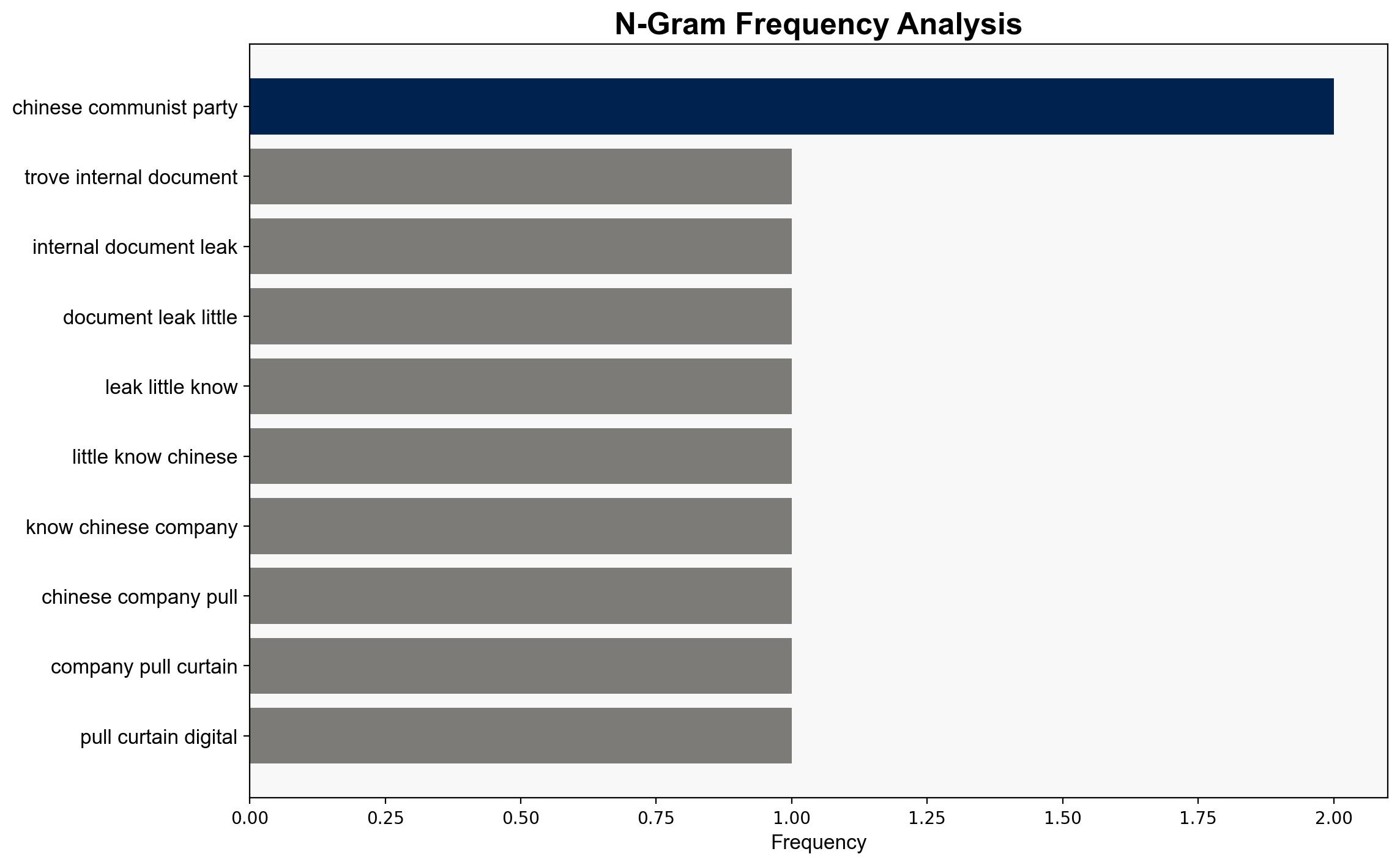How Chinas Propaganda and Surveillance Systems Really Operate – Wired
Published on: 2025-09-11
Intelligence Report: How China’s Propaganda and Surveillance Systems Really Operate – Wired
1. BLUF (Bottom Line Up Front)
The most supported hypothesis is that Chinese companies like Geedge and Golaxy are systematically exporting digital censorship and surveillance technologies globally, while also leveraging these technologies domestically to support state objectives. This is supported by leaked documents indicating their collaboration with academic institutions and government entities. Confidence level: High. Recommended action: Enhance monitoring of Chinese technology exports and strengthen international cooperation to counteract potential misuse of these technologies.
2. Competing Hypotheses
– **Hypothesis 1**: Chinese companies are exporting digital censorship and surveillance technologies to extend China’s influence and control globally, aligning with state objectives.
– **Hypothesis 2**: These companies are primarily driven by commercial interests, seeking to capitalize on global demand for surveillance technologies, with state alignment being a secondary consequence.
Using the Analysis of Competing Hypotheses (ACH) 2.0, Hypothesis 1 is better supported due to the evidence of collaboration with Chinese government entities and the focus on geopolitical issues like Taiwan and Hong Kong in their technology demos.
3. Key Assumptions and Red Flags
– **Assumptions**: It is assumed that all leaked documents are authentic and accurately represent the companies’ activities. The role of disgruntled employees in leaking these documents may introduce bias.
– **Red Flags**: The potential for misinformation, as the companies have denied certain allegations. The timing of the leaks coinciding with other events could suggest a coordinated information operation.
4. Implications and Strategic Risks
The export of Chinese surveillance technology poses significant risks, including the potential for authoritarian regimes to enhance their control over populations. This could lead to increased human rights abuses and destabilization in regions like Africa and Southeast Asia. Economically, it may undermine Western technology firms’ market share. Geopolitically, it could shift power balances, particularly in regions with strategic interests for China.
5. Recommendations and Outlook
- Enhance international regulatory frameworks to monitor and control the export of surveillance technologies.
- Foster alliances with countries receiving these technologies to promote transparency and accountability.
- Scenario-based projections:
- Best: International cooperation leads to effective regulation, limiting misuse.
- Worst: Unchecked proliferation leads to widespread human rights abuses and geopolitical instability.
- Most Likely: Gradual increase in regulation with intermittent misuse by authoritarian regimes.
6. Key Individuals and Entities
– Geedge
– Golaxy
– Brett Goldstein (Researcher at Vanderbilt University)
7. Thematic Tags
national security threats, cybersecurity, counter-terrorism, regional focus





